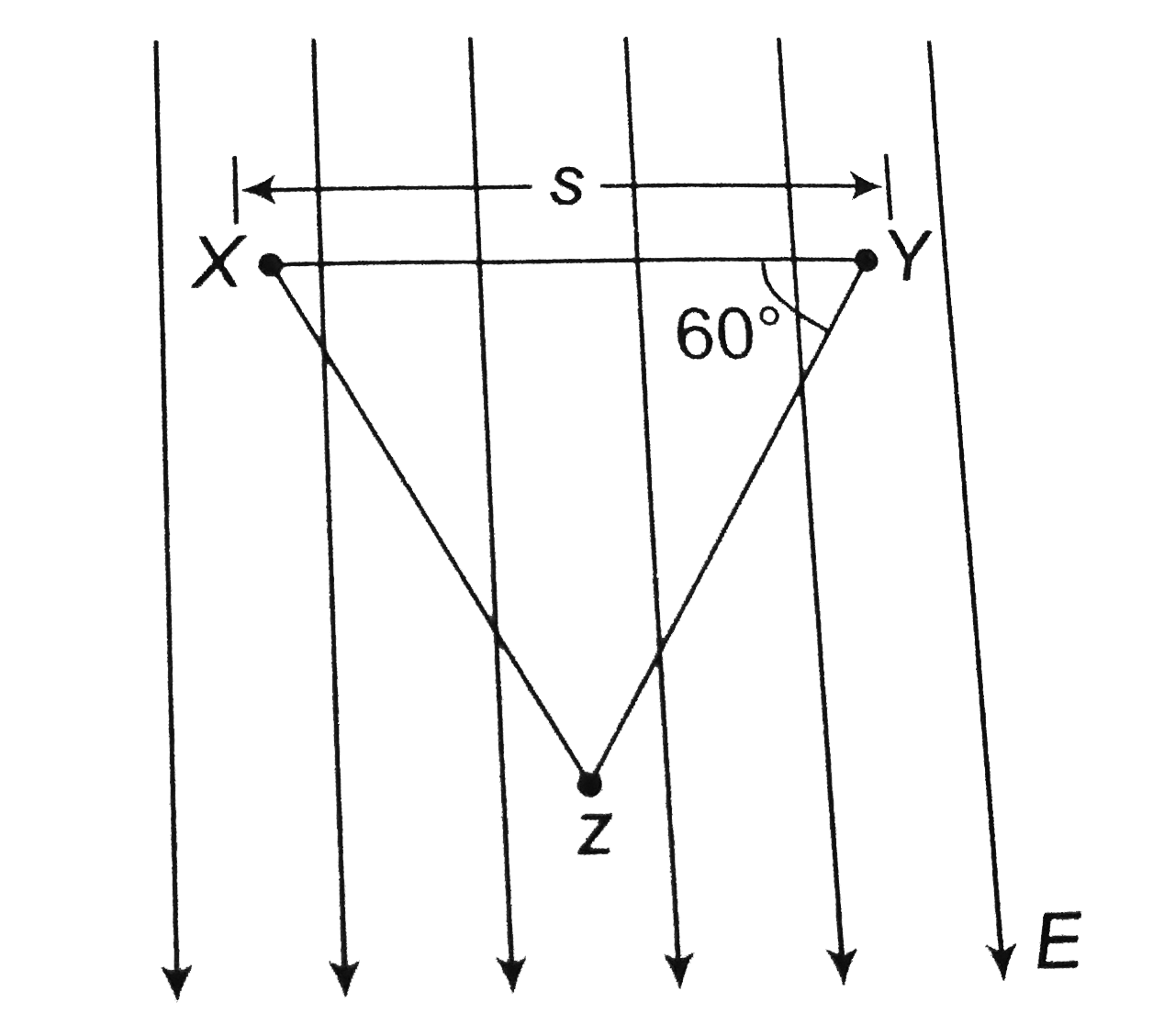Figure shown three points. X,Y and Z forming an equilaternal triangle of side s in an unifrom electric field of strength E. A unit positive test charge is moved from X to Y, from Y to Z, and from Z back to X.

Which one of the following correctly gives the work done against electrical forces in moving the charge along the various parts o fthis path ?
X to Y Y to Z Z to X+Es+Es cos60∘.−Es cos60∘.
X to Y Y to Z Z to X0−Es cos60∘.+Es cos60∘.
X to Y Y to Z Z to X+Es+Es cos60∘.−Es cos60∘.
X to Y Y to Z Z to X0−Es sin60∘.+Es sin60∘.
The correct Answer is:D
From E=dVdx, work done in moving a unit positive test charge in an unifrom electric field of strength E is given by
work done V=∫dV=−∫Edx
=−E∫dx=−Ed
where d is the distancetravelled parallel to the direction of E.
From X to Y,d=0. Therefore work done =0
From Y to Z,d=+ssin60∘
Therefore work done is Essin60∘
From Z to X,d=−xsin60∘
Therefore work done is −Essin60∘
Topper's Solved these Questions
- BOOK - A2ZCHAPTER - ELECTRIC POTENTIAL & CAPACITANCEEXERCISE - Assertion Reason8videos
ELECTRIC POTENTIAL & CAPACITANCE
- BOOK - A2ZCHAPTER - ELECTRIC CHARGE, FIELD & FLUXEXERCISE - Section D - Chapter End Test29videos
ELECTRIC CHARGE, FIELD & FLUX
- BOOK - A2ZCHAPTER - ELECTROMAGNETIC INDUCTIONEXERCISE - Section D - Chapter End Test30videos
ELECTROMAGNETIC INDUCTION
Similar Questions
In an uniform electric field of strength E, a charge particle Q moves point A to point B in the direction of the field and back from B to A. Calculate the ratio of the work done by the electric field in taking the charge particle from A to B and from B to A.
View SolutionIf xy+z=yz+x=zx+y then which one of the following is correct ?
View Solution
Knowledge Check
- Question 1 - Select One
If the test charge is moved back to R from P, then work done by electric field is
A3 JBzeroCcannot be determinedDNone of the above - Question 2 - Select One
What is the work done in moving a unit positive charge from infinity to that point in electric field called?
AElectric potentialBPotential differenceCElectric currentDElectric circuits - Question 3 - Select One
A positively charge particle moving along x-axis with a certain velocity enters a uniform electric field directed along positively y-axis. Its
AVertical velocity changes but horizontal velocity remains constantBHorizontal velocity changes but vertical velocity remiand constantCBoth vertical and horizontal velocities changeDNeither vertical nor horizontal velocity changes.
Name the parts W, X, Y and Z from the following figure :
 View Solution
View SolutionA test charge q is made to move in the electric field of a point charge +Q along a closed path as shown in figure. What is the work done ?
 View Solution
View SolutionA charge q is projected into a uniform electric field E ,work done when it moves a distance y in the direction of ¯¯¯E is
View SolutionA charge is moved in an electric field of a fixed charge distribution from point A to another point B slowly. The work done by external agent in doing so is 100J . What is the change in potential energy of the charge as it moves from A to B ? What is the work done by the electric field of the charge distribution as the charge moves from A to B ?
View Solution_________ is the ''work done in moving a unit charge between two points in an electric circuit''
View Solution

